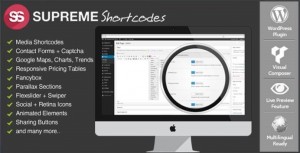So your organization decides to update its online content by migrating to a new site. Everyone’s excited to leave the outdated Content Management System (CMS) behind, and utilize a newer solution that’s more powerful and easier to use. However, the transition isn’t always painless. Moving from a legacy to a modern CMS solution requires planning and testing on the front end which will help streamline the content on the back end.
Consider these four steps for migrating to a new CMS with minimal interruption to the business:
- Take stock. The first step in a migration should be to carefully review the current content that is managed by the legacy CMS platform. You have to understand what information is included and what new data you’ll want to include. Talk with the vendor and/or IT consultant to understand if, for example, metadata and hyperlinks are currently within the existing CMS and the various file types.
Build lists of the different kinds of content with additional information attached to each type dictated by how it will be migrated to the new system. Discuss with the vendor how to build custom scripts to create the list of content. Determine which content is structured, such as press releases or blog posts versus unstructured content that is, for example, in a free form rich-text field.
- Develop the strategy. Once the inventory is built, you can then assess what content should be taken along and which could be discarded. Deletions can help streamline the migration process. The strategy should also detail what types of data cleanup and revision are required, for example, if you need to conduct coding. The work by IT or outside consultants to clean the data on the front end will help immeasurably after the migration. Another consideration for the strategy is to determine if you will conduct a manual or automated migration process.
- Test it out. Testing is often neglected, but it’s of paramount importance. Without testing, it’s impossible to know if the content is migrating properly. You need an in-depth review of the content to spot slight differences or changes to your proprietary information. One strategy to complete testing is to pick one document that shares characteristics with many others, and then see if all the properties and formatting were properly migrated. For example, if your site has 300 blog posts that contain the same structure, you can pick one to migrate to the new CMS and then carefully review it to spot any differences.
This is also a good time to check the tested content across various browsers. Testing is the right strategy before, during, and after the migration, and should include set processes for the remediation of any issues found during testing.
- Create content correlations. During the migration you should categorize and tag the content in ways that make sense and to help develop correlations between the content. You want to map out all of the metadata in a manner that will make it easily searchable within the new CMS framework, so staff can find the content they need in a timely fashion. Remember, you want to be sure that a migration is truly needed, and if it is, then you want as much organization and structure as possible to give you flexibility and efficiency on the back end.
Of course, there are other considerations while migrating to a new CMS platform. For example, you should consider your SEO rankings when an old website is removed without putting redirects in place. Management of all of the details takes time, but it’s worthwhile. Consider utilizing the services of a qualified IT consultancy such as TechBlocks, that can guide you through the right processes and handle the details that will determine if the migration is a success or failure.
Digital & Social Articles on Business 2 Community(48)
Report Post





